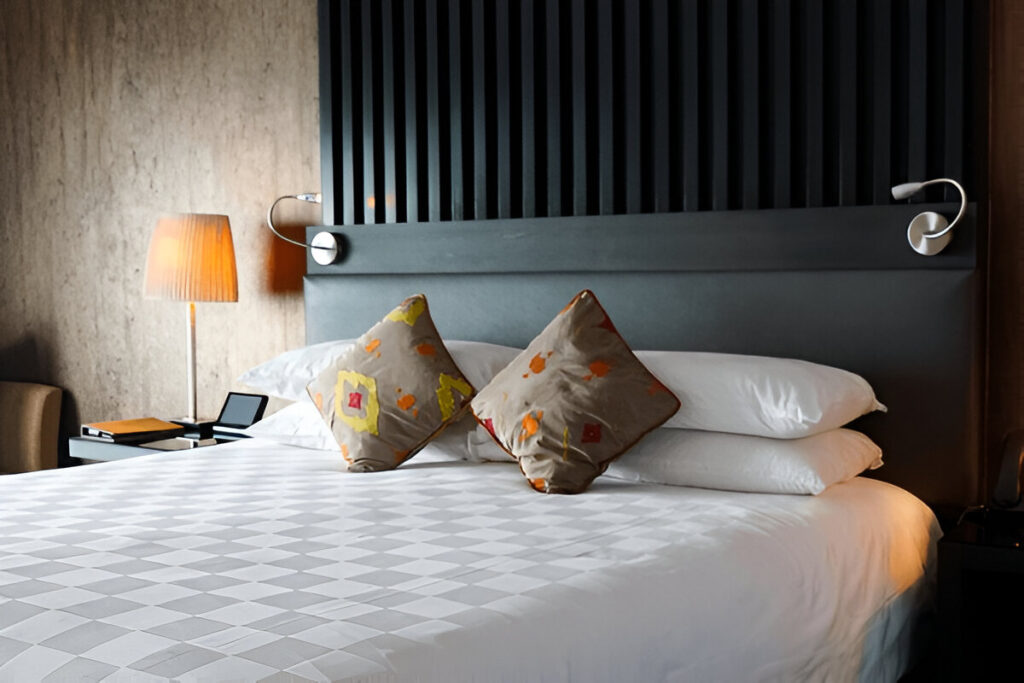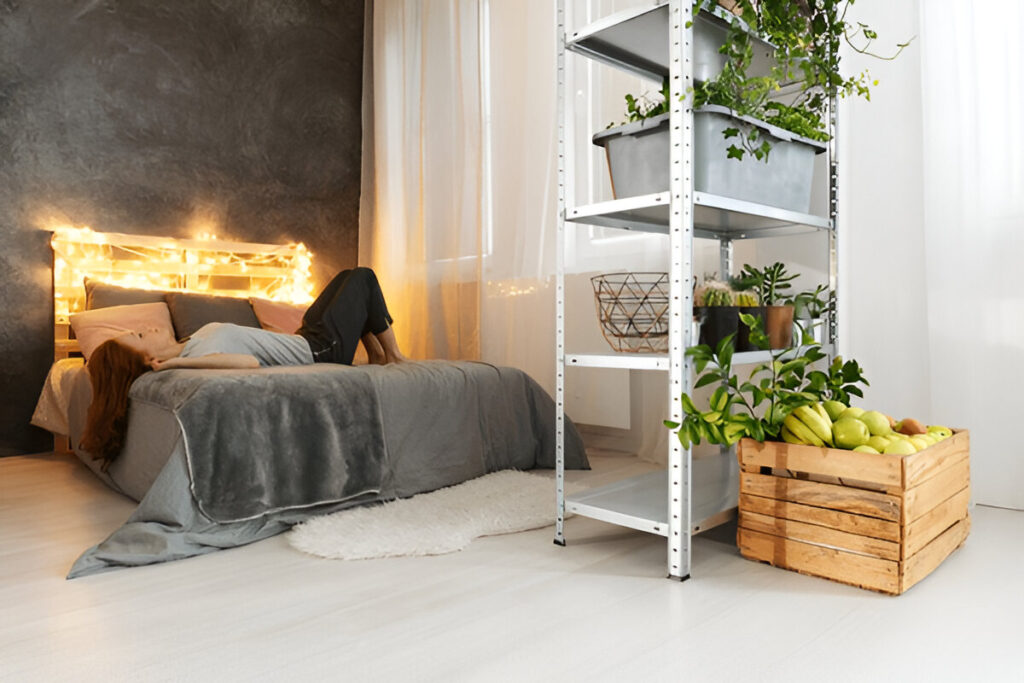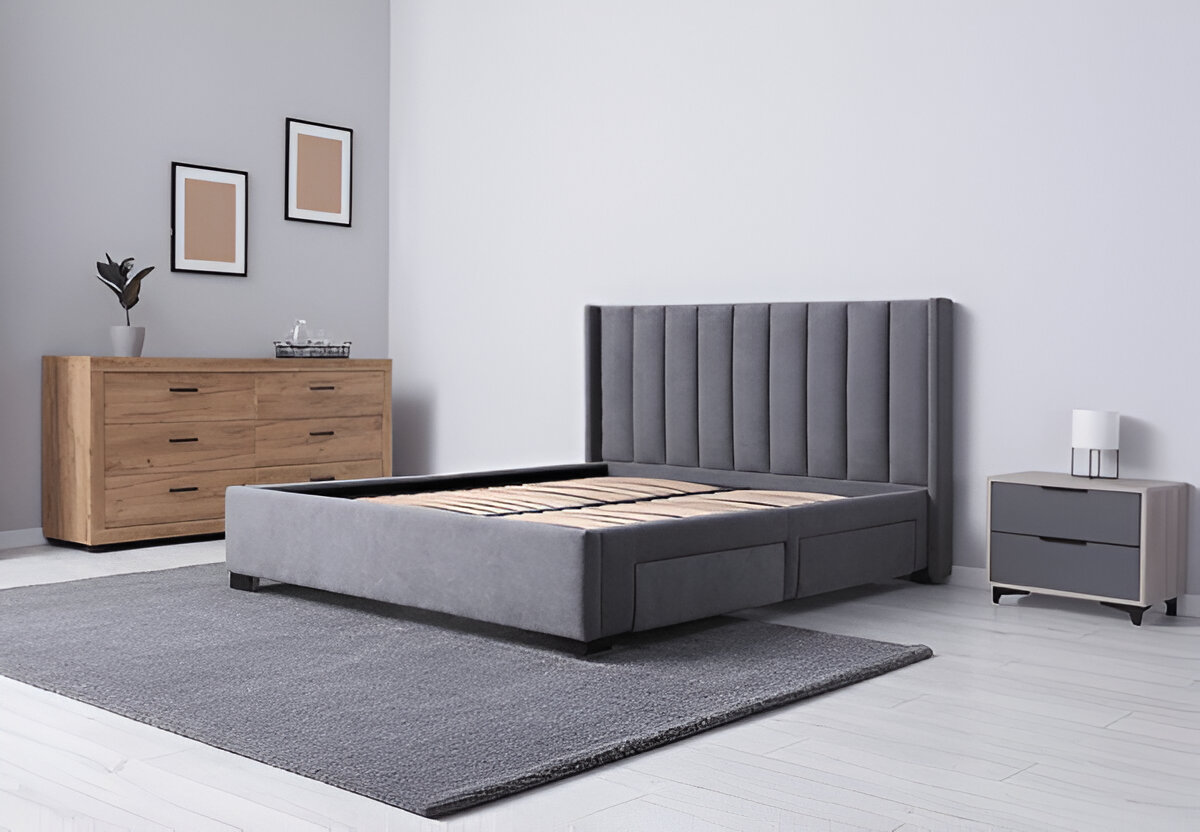The bed headboard is an angle that is very important and often ignored when it comes to designing the right bedroom. With a right-angled headboard, not only does your bed seem aesthetically pleasing, but it also supports the sitting upright posture and provides added comfort while sitting up. In this post, you will learn How Much Angle for Bed Headboard, from design specifics to materials to ergonomics. At the end of this article, you will know precisely what the angle of your bed headboard should be.
Importance of Headboard Angle
The angle at which a new bed headboard sits makes all the difference to how it functions and looks. Comfort and support are determined by a slightly reclined angle usually between 5 and 15 degrees. This means users can sit up comfortably while reading, or watching television without the strain on their necks or backs. However, it might not be as comfortable if you have no angle or vertical position on your headboard panel.

In addition, a headboard’s angle affects how the bedroom looks. A good way to bring a certain level of cohesion will be with a sleek and thoughtfully angled headboard that melds the adjustable bed, the bedding, and the other decor in the room. In addition, it makes the bed a focal point and adds an architectural element to the room.
Headboard Angle Factors to Keep in Mind
1. Purpose of the Headboard
- Aesthetic Use: It does not matter as much if the main purpose of the headboard is decorative. You can then concentrate on design and materials.
- Functional Use: If you happen to use your king-size bed as a seating area, it’s essential to find a reclined angle. It keeps you comfortable while sitting up on long couches.
2. Bed Placement
If it’s a bed placed against a wall, this often means that a minimal mandate holds for angling the headboard to fit the space seamlessly.
You can with relatively more freedom in your headboard design for freestanding larger beds.
3. Material of the Headboard
- Wooden Headboards: It’s easy to angle and personalize. Because they are durable and versatile, they are a favorite of almost all types of design.
- Upholstered Headboards: For extra comfort, many will come with built-in angles. It adds icing on the cake to these, actually making them great for long reading hours or time spent relaxing in a muji ash bed.
- Metal Headboards: While harder to angle, they can still be ergonomic supported, through proper design. They are finished for a modern or vintage look.
4. Bed Frame Compatibility
Make sure the angle of the headboard is proper to the bed frame (platform bed). Frames may also limit the degree of reclining due to their frame plan.
Ergonomic Benefits of a Reclined Headboard
There is a headboard that props the natural curve of your spine. Especially because people who spend many hours sitting in bed will find this beneficial. The reclined angle helps:
- Set up the head and neck correctly to relieve neck strain.
- It is especially ideal for alleviating back discomfort, especially in the lower back.
- It helps to promote a better posture by encouraging an upright (slight arch of the lower back) yet relaxed sitting position.
Also, a reclined headboard helps with better blood circulation. If sitting for any length of time, sit upright to keep the lower body elevated and relieve pressure to prevent numbness or problems.
The Ideal Headboard Angle Measurement
Step 1: Determine Usage Needs
Are you someone who reads, works, or watches YouTube videosin bed? If yes, it’s better to lean at an angle. A vertical or very slight angle for the headboard is just fine for purely decorative purposes.
Step 2: Assess the Headboard Height
For taller headboards smaller angle may be required to keep stability and visual balance.
Shorter headboards offer a more steep recline for additional comfort and look.
Step 3: Test Angles
Play with angles between 5 – 15 degrees to find out which feels best. Before you design in the final, test this angle by using cushions or mock setups.
Types of Headboards and their angles
1. Adjustable Headboards
Headboards come with adjustable ones which let to set up the angle according to your preference. In particular, if you have readers who have differing comfort needs, this is useful.
2. Fixed Headboards
They are set automatically at a certain angle, generally for convenience. Fixed headboards are more affordable and easy to install.
3. DIY Headboards
Headboards with a special angle are available for DIY enthusiasts. It’s simple to come up with the incline you’re looking for using materials like plywood, foam, and fabric. You can add some personalized touches to it by embroidering or a unique pattern.
4. Wall-Mounted Headboards
Wall-mounted headboards allow for installation at the angle of your preference. For anyone trying to maximize space in a room or bring a unique design element to an area, they are a great option.
Common Mistakes to Avoid

1. A Vertical Headboard for sitting comfort
Vertical headboards can look great, but they often aren’t ergonomically sound. A large amount of time sitting against a vertical headboard is uncomfortable.
2. Mattress Thickness Ignored
The headboard itself can change because a thick mattress can change the perceived angle.
3. Over-Angling the Headboard
At an angle of more than 15 degrees, it could be uncomfortable to sit upright. The headboard when over-angled can be also influenced by the overall stability of the shape.
4. Neglecting Room Aesthetics
The angle of the headboard should be similar to the room’s design. However, an overly dramatic angle doesn’t quite fit the minimalist decor.
Headboard Functionality Boosting

To assist in the activity, creatively arranged pillows or padded upholstery can be added. Match your bedroom’s color scheme when choosing your fabrics.
Built-in lighting or storage compartments are installed for convenience. Small shelves on the headboard, or even LED lights there can create some extra functionality and visual appeal behind the headboard.
Add adjustable features, like a reclining mechanism or detachable panel.
Angled Headboards Design Ideas
- Geometric Patterns: A headboard that is both an art piece and an angle combination.
- Layered Textures: It would be better to use several materials such as wood, fabric, and metal, to bring extra depth and dimension.
- Incorporate Technology: The ports can be oriented to add USB ports, wireless USB charging pads, as well as or [integrated] speakers for a modern touch.
Comparison Between Reclined and Vertical Headboards
| Aspect | Reclined Headboard (5-15 Degrees) | Vertical Headboard (0 Degrees) |
|---|---|---|
| Comfort | Offers better ergonomic support for sitting and lounging. | Lacks ergonomic support, leading to discomfort over time. |
| Posture Support | Aligns with the natural curve of the spine, reducing strain. | May cause strain on the neck and back during use. |
| Usage | Ideal for reading, watching TV, or working in bed. | Suitable for purely decorative purposes. |
| Aesthetic Appeal | Adds depth and dimension to bedroom decor. | Offers a sleek, minimalist look. |
| Customization | Often adjustable or modifiable. | Typically fixed and harder to alter. |
| Material Options | Commonly upholstered or wooden for comfort and style. | Often uses wood or metal for structural integrity. |
| Installation | Requires careful alignment for stability. | Simpler installation without angle considerations. |
| Functionality Enhancements | Can include built-in lighting, storage, or adjustable features. | Limited functionality; focuses on design simplicity. |
FAQs About How Much Angle For Bed Headboard

Q1. How close is enough to the bed for a headboard to work?
Headboard height depends on personal preferences on the best angle between 5 and 15 degrees.
Q2. Can you angle an existing headboard?
You can change many of these headboards by adding wedges or adjusting brackets. It’s a simple solution for improving the ergonomics of an existing piece.
Q3. What is the role of the headboard angle on posture?
The natural curvature of the spine is supported by a reclined headboard angle, so neck and back strains are avoided.
Q4. Are adjustable headboards worth it?
Yes indeed, flexible, and can be made as needed. People who sit differently will find them useful.
Q5. Which materials are better for angled headboards?
Upholstered and wooden materials are easy to adapt to and comfortable. Modern designs work well with metal as well.
Q6. What are the consequences of the changing angle on the design of the bedroom?
A deep, well-angled headboard adds depth and dimension to the whole bedroom. In short, the bed can become the focus of the room.
Q7. Does it have to be in a DIY headboard angled?
Absolutely! The freedom to build a headboard at the angle you need with a DIY project is great. You also have access to exploring different materials and styles to clot whatever vision you have.
Conclusion

The design and comfort of the headboard in your bed depend on the angle. However, for most people, a 5 to 15-degree recline is great and the angle at which you lie will ultimately vary from person to person depending on their lifestyle. Factors such as material, height, and functionality can help you select a headboard angle that raises the aesthetics of your bedroom and offers incredible comfort. It’s something to consider whether you are buying a new headboard, changing up an existing one, or designing your headboard, with attention to this small detail transforming the way you sleep and lounge. In addition, the use of modern features and innovative designs for your headboard will make it the focal point of luxurious style and functionality.
- Bed with Cushions Comprehensive Guide - January 20, 2025
- St Genève Pillow Luxurious Sleep Experience - January 18, 2025
- Instructions for Assembling Silver Bunk Bed - January 16, 2025
